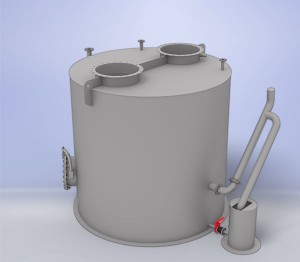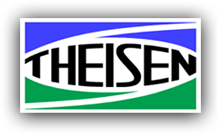 Via the overflow valve B17 the excess process gas not fed into a consumer system is routed to the clean gas stack to be emitted as combusted waste gas. The internal water seal, through which the process gas must pass, provides a flashback arrestor function between the flame head to the gas cleaning plant.
Via the overflow valve B17 the excess process gas not fed into a consumer system is routed to the clean gas stack to be emitted as combusted waste gas. The internal water seal, through which the process gas must pass, provides a flashback arrestor function between the flame head to the gas cleaning plant.
How does the Overflow Valve work?
The vessel is partially filled with water. The water level control system allows for an infinitely variable water level within a defined range. The clean gas pipe is immersed into the water seal and, depending on the water level, creates a back pressure which the gas must overcome to be routed to the clean gas stack.
If the immersion depth in the overflow valve B17 is smaller than the one in the non-return valve B18, the clean gas flows towards the clean gas stack. Vice versa, if the immersion depth in the overflow valve is higher than the one in the non-return valve, the clean gas is routed to the consumer system via the non-return valve.
To ensure a constant water level in the vessel, “sealing water” is continuously supplied. The overflow leaves the vessel via the water level control system and is drained to the foundation sump.


